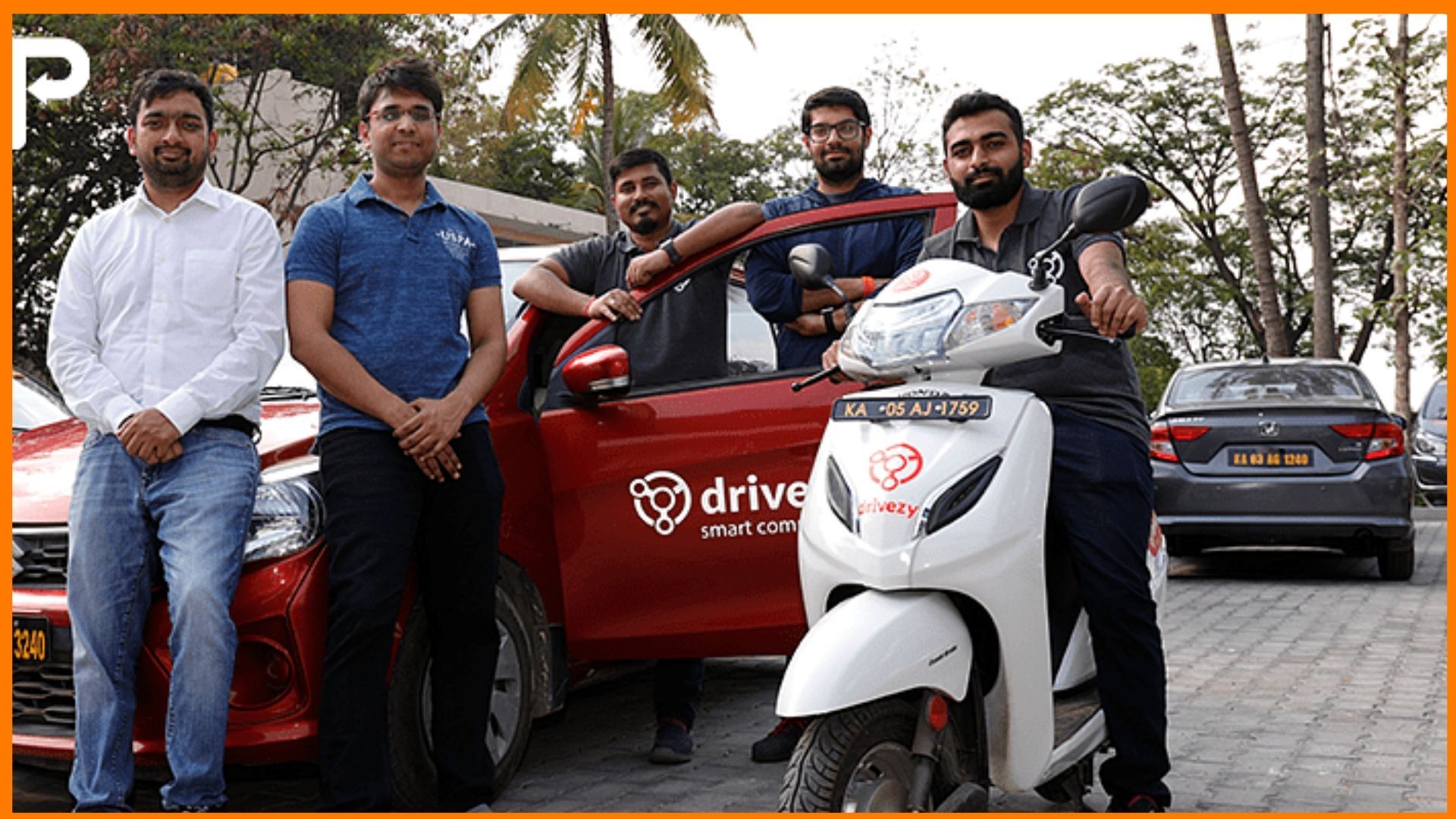The world is evolving at a fast pace, right from climate change to pollution and everything in between — things are moving fast towards a more sustainable and economical future that is built upon the grounds of frugal innovation and so is India’s push towards sustainable use of resources and development.
The EV industry is on the verge of major leaps forward and this is when Ola & Bounce, two of the promising names in the sector are up for a ‘neck-to-neck’ tussle to the top. But who would actually be able to have the upper hand in building the future of automotive? Let’s find out.
- Ola Electric — The Founder’s Ambitious Dream Ft. Mark Zuckerberg
- From Urban Mobility to Everything Electric: Decoding the Functioning of Ola and the EV Dream
- Enters Bounce — A Fresh Twist in the EV Saga
- Give Me the Liberty, and Take My Money — Understanding Bounce’s Strategy and the Indian Consumer
- The Pain — The One Who Solves It Faster, Wins
Ola Electric — The Founder’s Ambitious Dream Ft. Mark Zuckerberg
No click baits. Bhavish Aggarwal & Mark Zuckerberg may be the two immensely popular CEOs with completely different products in two distant time zones, but they still have a striking similarity i.e., putting in their everything for a vision they have for themselves and the company.
What Mark Zuckerberg is doing with Meta is something that all of us already know, and Bhavish too — seems to be in that zone, where he thinks and believes that Ola’s future lies in the automotive sector and that is what the company wants to be known for, and not just another cab-hailing company.
In fact, when Ola Electric began in 2019 — many perceived it as a side gig for the cab-hailing unicorn, but the recent developments have pivoted Ola Electric as Ola’s flagship product.
From Urban Mobility to Everything Electric: Decoding the Functioning of Ola and the EV Dream

Ola, which was among the first movers to launch last-mile mobility solutions in the country, grabbed eyeballs for all the right reasons. A track record where they were able to keep Uber on check to establish a duopoly in the last mile mobility landscape.
Thus, it was no surprise when the company announced its plans to expand into other verticals, but things changed. Out of all the categories, Bhavish and team vesting into the EV sector and that too with an in-house production unit came as a surprise to many.
But then, the reveal and the marketing on top of it successfully created that much-needed buzz in the automotive industry and among EV enthusiasts, who were eagerly waiting to discover what lay ahead.
Ola launched the S1 and the S1 Pro — two of their flagship electric two-wheelers that could cover the maximum distance of 180+ km on a single charge, a debatable claim that felt hard to achieve in real life. They were priced at a premium, significantly more than what their competition was charging for their EVs.
Ola was clear about its stance, and that was to position its offerings on the basis of quality and not price. With an exclusive invite-only system, Ola aimed at gaining enough momentum and buzz before a full-fledged launch.
However, the move didn’t reap enough rewards for the aggregator and it was more of a hit-and-miss. What followed was a pivot in the way the company went about its marketing endeavors. Ola went in with the pre-booking strategy, where users could book the vehicles for a token amount of ₹499, paying ₹20,000 on confirmation and the remaining at the time of delivery.
The small token for pre-booking went well with the customers, as they were a bit overwhelmed with the considerable price tag for the vehicle, despite all the features it comes with.
Reduce the premium price tag, that Ola deemed as ‘affordable’ and the company had cracked the code for a winning product that could redefine the company mission and scale in the times to come.
However, as we already mentioned — the high penetrating price was going to be an issue not because the price was too high — but because of the skeptical nature of the average Indian customer.
The users have expressed concerns about the EV industry overall, with a question mark upon the ability of EV manufacturers to get it right with their money and adhere to the safety norms.
Enters Bounce — A Fresh Twist in the EV Saga
First things first. Bounce was meant to be taken seriously, not because of the product but its sheer habit of solving complex problems differently, simplifying them for the end user.
Bounce started off as a bike sharing and self ‘PuDro’ mobility company Is known for this same appetite to solve mobility once and for all, by giving users the leverage to pick up and drop off their vehicle at the nearest bounce dockyards, at their own convenience.
The team and the idea of ‘Bounce’ were already bagging positive reception and that is when the company announced its focus on EVs and teased its first entry-level vehicle ‘Infinity’ for the daily commuter.
When a company that scaled to 100000 rides per day by just focusing on a couple of cities, announces something — we tend to get curious. Isn’t it? This was no different. Bounce’s announcement of the EV made one thing clear i.e V. Hallekere and the team have something cooking in their heads and the R & D labs.

Give Me the Liberty, and Take My Money — Understanding Bounce’s Strategy and the Indian Consumer

The founders were aware that they were competing with someone like Ola and Ather who have the luxury of a vast distribution network. Competing with them on the distribution front may not be a good idea and Bounce’s pricing for their entry-level scooter further justified their understanding of the Indian market.
Bounce’s entry-level scooter which is available at a price of ₹36,000 without the battery (apple folks crying in the corner) is about giving the liberty back to the customer, by giving them the option to pick what they want.
Bounce’s swappable battery feature across the network made the cost of owning a two-wheeler EV significantly cheaper, and the Bengaluru-based company surely deserves some brownie points for the move.
“The public transport in India is not like it is across the globe. For instance, there are 6,000 buses for over three million people in Bengaluru, alone. Public transport was thus overcrowded, and the number of people dependent on it was high. The biggest question is how you get these people to move,” Bounce’s Vivekananda H, Co-founder and CEO, tells YourStory.
The Pain — The One Who Solves It Faster, Wins
EV acceptance in India can’t be just dependent upon one or two companies. Rather, it has to be a combination of various factors, permutations, and combinations — and a lot of that has to do with the quality of the product and the price point.
For Ola, the pre-orders became a curse as they have failed to deliver upon orders and promised features, something that they have assured to fix in future updates.
The fire outbreaks in the vehicles, poorly built, and lack of safety — a lot of which is being deemed as the result of rushed manufacturing and cost cutting, can become deal breakers for customers who are looking to switch to a reliable EV.

On the other hand, pricing and delivery are some of the major pain points that will determine the potential winner in the long run — as the price, distribution, and infrastructure still continue to be the biggest pain points when consumers look to switch to a new piece of technology.
Where Ola sells the EVs through its own app, Bounce has tied up with the homegrown marketplace, Flipkart to sell its EVs and make them accessible to customers. With the rise in fuel costs, impending recession, layoffs, and escalating inflation — affordability has become the need of the hour for customers.
However, this has also created chaos among the EV and OEM manufacturers as the ‘risk’ involved with the utility of a technology or an EV-like industry, await the tests of time and it is not something that the average Indian customer will be assured about, from day 01.
How companies can actually win it, is via a systematic funnel right from marketing to after-sales support. When customers switch to something new, they aren’t buying the product or the functionality — they are buying the hope and the change that it promises.

Conclusion
As they say, never judge the conclusion by the beginning — and rightly so, we feel that it is too early to decide upon a winner in the vastly interesting and highly competitive urban mobility landscape.
Companies like Ather, Bounce & Ola are constantly pushing their limits and redefining the way India perceives EVs, but then it is too early to say anything. When you take that giant leap forward, there are chances that you will stumble here and there, and you may fall too — but that is what startups are all about.
They’re not afraid to fall because they are not afraid to fail and that is what makes all the difference. Ola and Bounce are here to stay, but who’ll stay relevant in the long run? Well, that is the story for another ‘What if’!
FAQs
Who is the CEO of the Bounce?
Vivekananda Hallekere is the CEO of Bounce.
Which is the best EV scooter?
Some of the best EV scooters are Nami Burn-E 2 Max Electric Scooter, Dualtron Thunder Best Premium Electric Scooter, Kaabo Mantis Pro Best Electric Scooter, etc.
Do Bounce electric needs a license?
As per ARAI, any electric bike traveling at more than 25 kmph with motor power exceeding 250W needs a license for its use. And under the same criteria, Bounce electric also requires a license as it can travel much faster than 25 kmph.
Is Bounce an Indian company?
Yes, Bounce is an Indian company based in Bangalore, Karnataka.










